
Lessons learned from Basque cuisine to address complex problems in Jordan
Hunger, food waste, food security, unfair economic systems, human rights, governance, financing, the environment, gender equality, water resources, are some of the areas that permeate today's crises in different ways.
As in the case of Jordan, where the majority are related to the food chain. The solutions to these complex problems require drastic changes in the perspectives of how to address them, moving from the linear to the systemic, so that local actions and initiatives encompass the social, cultural, political and economic aspects (Capra, 1997, p. 15) with the aim of obtaining more effective and long-term solutions.
Locating food in the plane of the complex to which it belongs —since it is seen as transversal to almost all the areas that permeate system transformations— and stripping it of a single definition is becoming more necessary than ever. John Law said that “simple and clear descriptions do not work if what they describe is not itself very coherent. Trying to be clear just adds to the mess” (2004). Using a multidisciplinary approach to the field of food would make it possible to continue blurring its borders so the interconnections between the different areas for the development of a country through its food sustenance become visible.
Brillat-Savarin said in his book "Physiology of taste" that food is governed by "the rules of the stomach" (1825). In the arts and humanities, food is almost always considered of great symbolic value. In the field of nutrition, the characteristics of the nutrients linked to the metabolic process and others that affect the body are studied. In anthropology and sociology, the identity traits and, to a great extent, historical traits too, are evident in the transformation and evolution of the food in a territory. From a design perspective, food is a language that acts as a bridge and allows interaction between the environment, territory, culture and society (Lepre, P. R, 2019). From the perspective of a cook, food is restorative, and in many cases an element that facilitates social transformation.
Menu
In a gastronomic exercise which sought to generate debate around the challenges identified within the Jordanian food system, the UNDP team together with Imago and ALC, designed a sensory performance with the Jasmine House restaurant where disciplines such as art (performance), language (discursive menu) and gastronomy (dish design) came together.
The performative sense allows the interaction of multiple actors around the same system, facilitating the coexistence of different semiotic-material realities even when they seem contradictory. Performance is capable of encompassing tensions (Fisher-Lichte 2008). Gastronomy as performance often integrates practices that are prescribed and improvised on the same plane, capable of merging with time (Szanto, D. A 2015). This gastronomic-performative approach, which includes sensory, social, productive, creative and intellectual aspects, provided a bridge to explore the relationship between the system and food. The relevant questions arising from the deep listening process, the mapping of agents carried out in the territory and other food information, served as a guide for the design of the prototype dishes and the menu approach.
The potential of gastronomy, capable of relating all those actors that build the food environment and that make up the food value chain or the creation of food dishes, meant (re)thinking food aspects from the perspective of the farmer, producer, the industry itself, distributor and person who decides and consumes. The design of the menu tried to relate and bring to the table the needs and challenges that a fairer and more accessible food system aspires to cover.
In this performative exercise, gastronomy acted as host and facilitator/dynamizer of the participatory space, introducing different questions about the food system between each step (dish).
Chef Karmah Tabbaa and her team, with the support of Imago chefs, created and hosted the ultimate activity in ALC visit to Jordan. The exercise took place at Jasmine House, Tabbaa's culinary space. The team served (to approximately 25 people) a menu created from the different perceptions of the community about the food system collected from the beginning of the listening process in December 2022 to date.
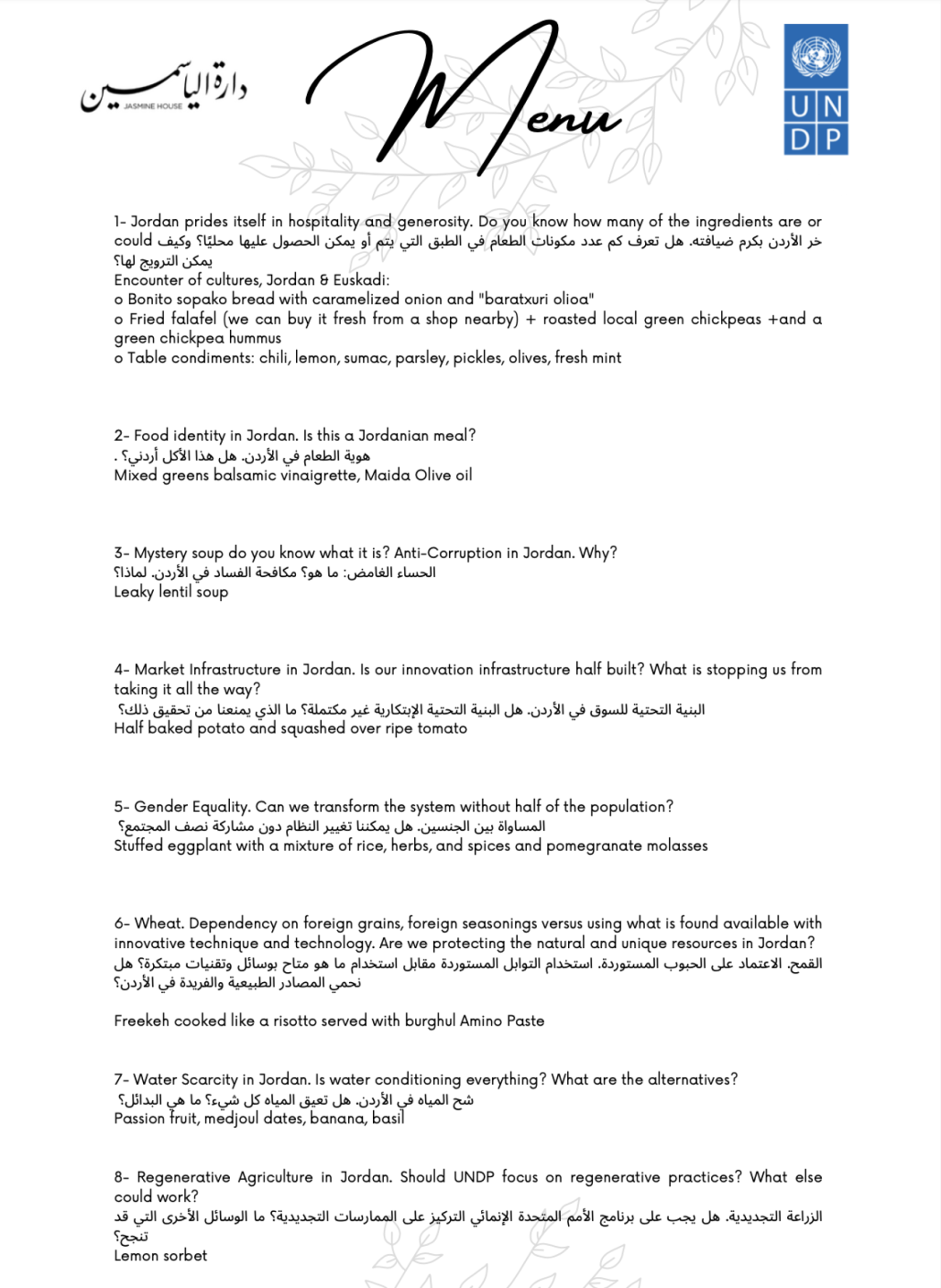
First course
The first dish represented the union of cultures (Jordan and the Basque Country), in gratitude for the country's hospitality and in turn as a questioning of the ingredients that are or are not considered part of a culture.
In addition to this welcoming gesture, this first course introduced a theme linked to more symbolic or political issues. The theme of heritage, which is so present in social issues, constitutes a central element in gastronomy. The food systems of each region shape a knowledge with which the citizen identifies and of which he feels proud. The foods or preparations that represent this territory generally reflect the relationship that the inhabitants have historically maintained with the land and the sea. In this case, the falafel and hummus dishes introduced the paradox of how quasi-national dishes are currently made with inputs that are brought from foreign markets. Jordan almost entirely imports the chickpea that is used in various “local” dishes. Jordan once enjoyed food sovereignty, but today, and like most countries in the world, it presents a food balance that is highly dependent on the foreign market.
Second course
The second question was about food identity in Jordan: Is this a Jordanian food? The dish, made up of a mixture of lettuce, grown and harvested in an organic garden by local women, alluded to the empowerment of women within the system as builders of the food future. The dressing, an emulsion with Maida oil, produced in the region, had the intention of showing the quality products found in the territory and their potential.
There are many countries that develop policies to promote and improve production systems in order to safeguard local products. These dynamics are frequently supported by what we know as the “Denomination of origin seal”. These identifications are intended to show that a selection of products meets certain quality standards and guarantees the differentiation from other similar ones. Somehow, products from certain geographical areas are indicated to make the activity around them profitable. They can add information on natural or human attributes that affect the production of the product in its geographical environment. These seals often play a driving role in the sectors where they are applied.
Jordan has its own high-quality food to which this policy could be applied to favor quality production in peripheral areas where Maida oil (of great quality and world recognition) is produced.
In the listening and sensemaking sessions, it has been identified that the government could develop an agrarian and food processing policy that positively discriminates the national product to point it to a position of competitive advantage in the market. The objective would be to energize potential sectors.
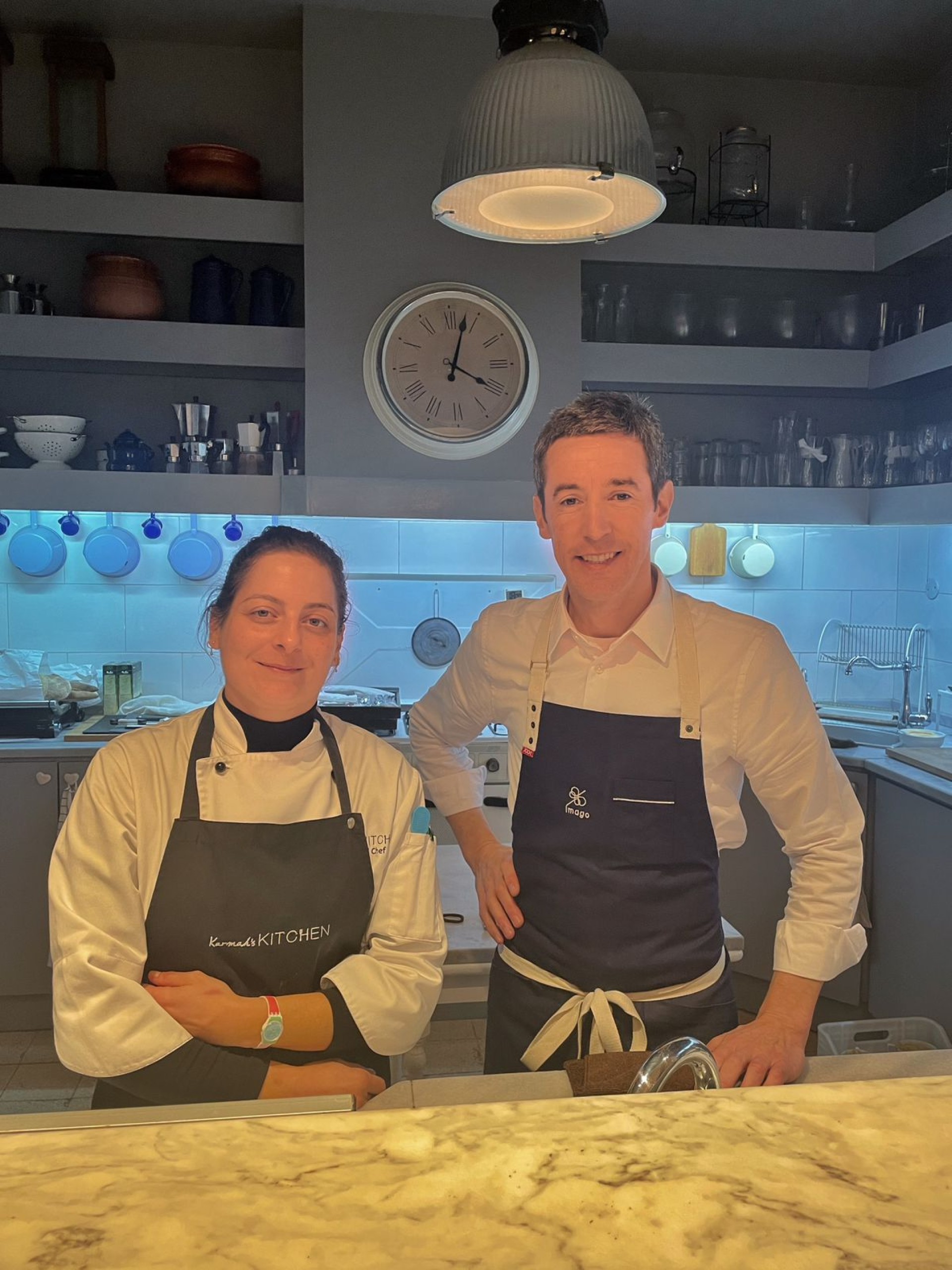

Third course
A lentil soup was served as the third step, asking: “Mystery soup, do you know what it is?”
Anti-corruption in Jordan Why? "Policy managers sometimes try to cheat some laws, as well as the interference of some, in particular or in general, out of nepotism". To carry out the act of eating, participants were invited to drink the soup through a colander as a performative element. this utensil symbolized the corrupt hand that takes what is promised to the community and lets it slip through the administrative fingers.
During the course of the menu, the attendees were asked to consider how an element so sensitive to the life aspirations of the people with whom they work --food systems-- could generate damage as vast as invisible. This topic introduces the need to discuss governance models that can guarantee a normative or evaluation dimension to the governing process itself.
“I want to see integration and cooperation between the parties responsible for food safety…whether it be the ministry of agriculture, the ministry of industry, chambers of commerce, chambers of industry, store owners, farm owners, small farmers and consumers -end users- in a way that guarantees the use of existing resources".
Fourth course
The fourth course introduced Jordanian infrastructures and their connection between regions: infrastructures that had been left halfway under construction, devaluing investment items that did not end up providing well-finished solutions to users or market operators. "People who live in remote villages have a hard time coming here to buy things. And this varies from person to person. That is, as a person who lives in a village, if you want to take your belongings from here, you have to pay a lot of money". Participants were asked to reflect on the terms of "innovation" in infrastructure through half a potato and a poorly assembled tomato. A half-finished dish even though its components were noble and well-intentioned.
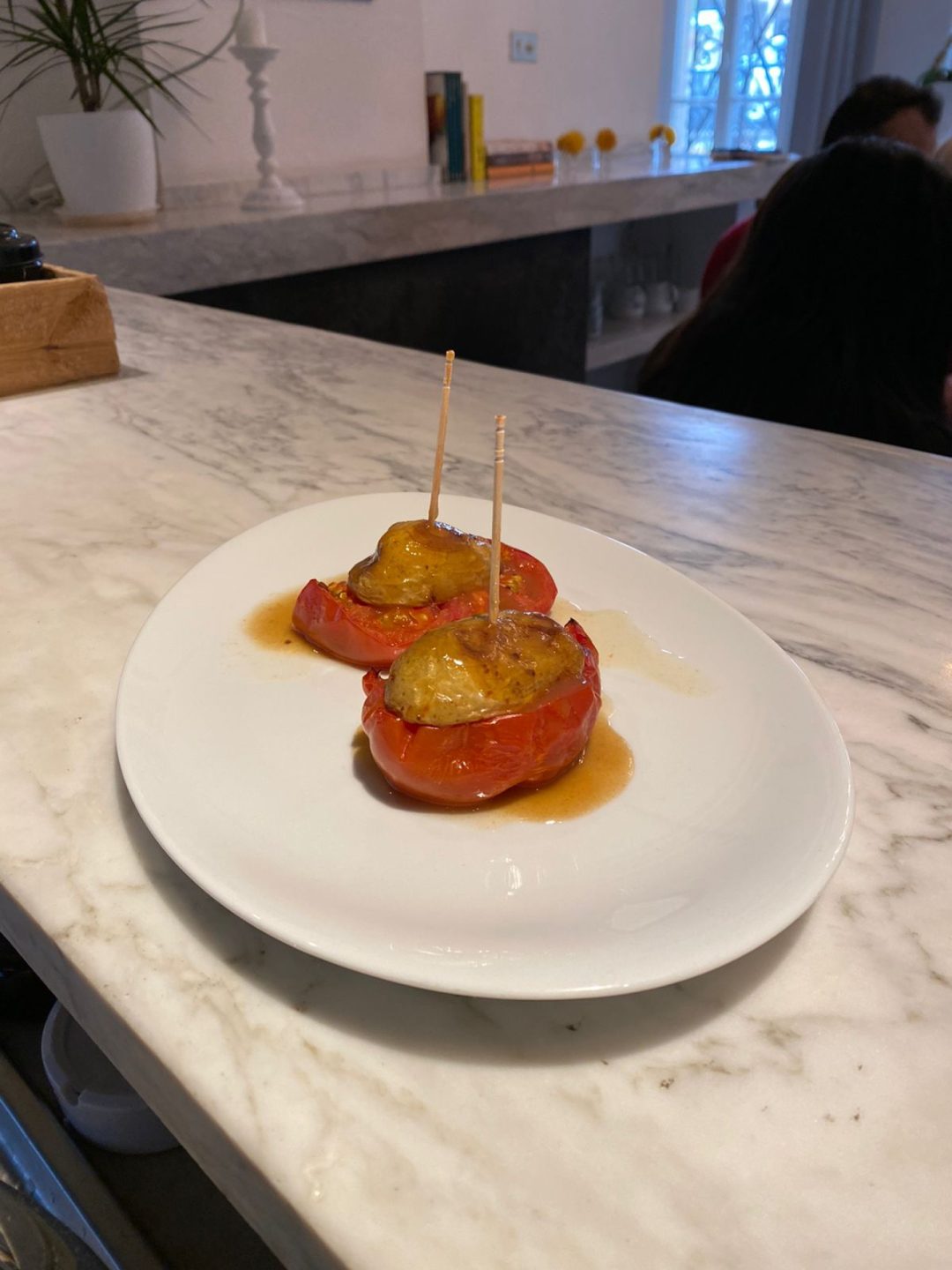
Fifth course
From the flavors of an aubergine stuffed with a mixture of rice, herbs, spices and pomegranate molasses, the importance of reinforcing gender inclusion in the food system became visible: Can we transform the system without half the population?
The herbs with which this dish of stuffed aubergines was seasoned came from a cooperative of women who carry out their activity in the region and supply Jasmine House. It is one of the key suppliers of the house.
"We have to give women more opportunities to work in various fields, instead of limiting them to a few, to equalize the opportunities of men and women"
Experience shows that improving gender equality in rural areas is, in fact, a key instrument to fight poverty and hunger. One of the first comparative studies of developing countries revealed that, between 1970 and 1995, 43% of the reduction in hunger that occurred was attributable to advances in women's education. Thus, 55% of the advances in food security in the countries studied were due to improvements in the social situation of women (Food and Agriculture Organization of the United Nations s/f).
Sixth course
The sixth bite appealed to the dependence on imported cereals and the non-recognition of the potential of some of the country's seasonal products. “Everything is imported from abroad. Of course, the most important thing is wheat, which is poured into many productions of the country. The bread is the food. Bread is essential for the Jordanian people". With a Freekeh cooked as a risotto served with Burghul amino pasta the question was: Are we protecting Jordan's unique and natural resources?
Freekeh, a much-loved dish in Jordan for its uniqueness and sophisticated aromas, constituted a "comfort food" piece during the meal, making it almost the main course without the need for animal protein. The traditional nature of this preparation was combined with Karmah Tabbaa's own production, where based on techniques learned in his different training restaurants, she managed to make a fermented paste that incorporated the umami flavor into the recipe. Far from making it with the typical salt or meat concentrate, it was done by fermenting with Aspergillus Orizae seeds from the area to achieve a paste with organic and flavorful acids that made it as succulent as the traditional preparation but much healthier, avoiding salt. In this way, an alien technique that, out of context, could generate rejection, managed to be the perfect complement to a preparation that is traditionally eaten in the region. This combination perfectly demonstrates the possibility of finding creative and avant-garde solutions to historical needs. This dish was an invitation to always leave the door open for innovation, adapted to the needs of each moment regionally.
In a territory where the lack of water is one of the most significant problems identified by the community, the production of fruits such as dates, passion fruit and mango are among the percentage of products that the country exports the most, while leaving the population without consumption opportunities. In the same way, Karmah Tabbaa commented that huge plots of land were planted with plantain in Jordan, aware of the large amount of water it needs to be able to produce minimally viable production figures. This example questions the agrarian policy or the initiatives of the first sector that seek to find sustainable solutions adapted to the reality of Jordan. How is it possible to promote the planting of a fruit and vegetable species when it needs similar proportions of hydration and Jordan sometimes does not reach the fifth of the person/m3 access to water necessary to guarantee food security?
They call them "exotic" foods even though they are grown on their own land and with their own hands. “Jordan is known for exporting high-quality products, as evidenced by our friends and relatives abroad who claim to have purchased Jordanian-made products, such as dates. While the low and medium quality products stay in Jordan”. Although it might seem a coincidence, the very morning that the meal was offered at the Jasmine Restaurant, Karmah was able to buy vegetables from a stall that came from the king's royal gardens that had exceptionally ended up in the aforementioned store, since usually their market distribution is Saudi, Qatari and Dubai. Should the highest authority in the country be the example of progressive dynamics in agriculture and the country's market? Can you partially do it?
Regarding the scarcity of water in Jordan and the difficult access to local food, the questions: Does all the water condition you? What are the alternatives? They pondered over passion fruit, dates, Medjoul, banana, and basil.
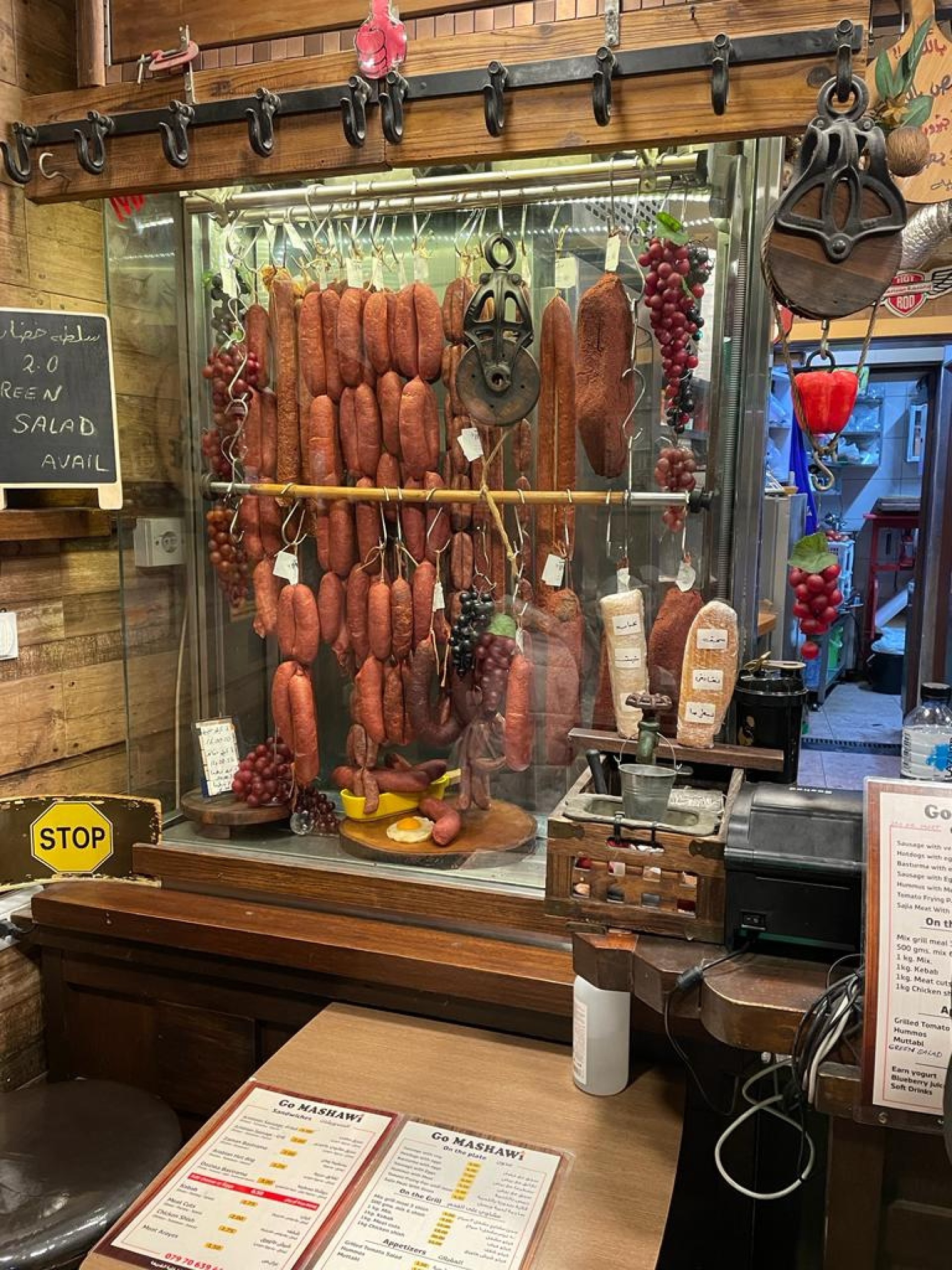
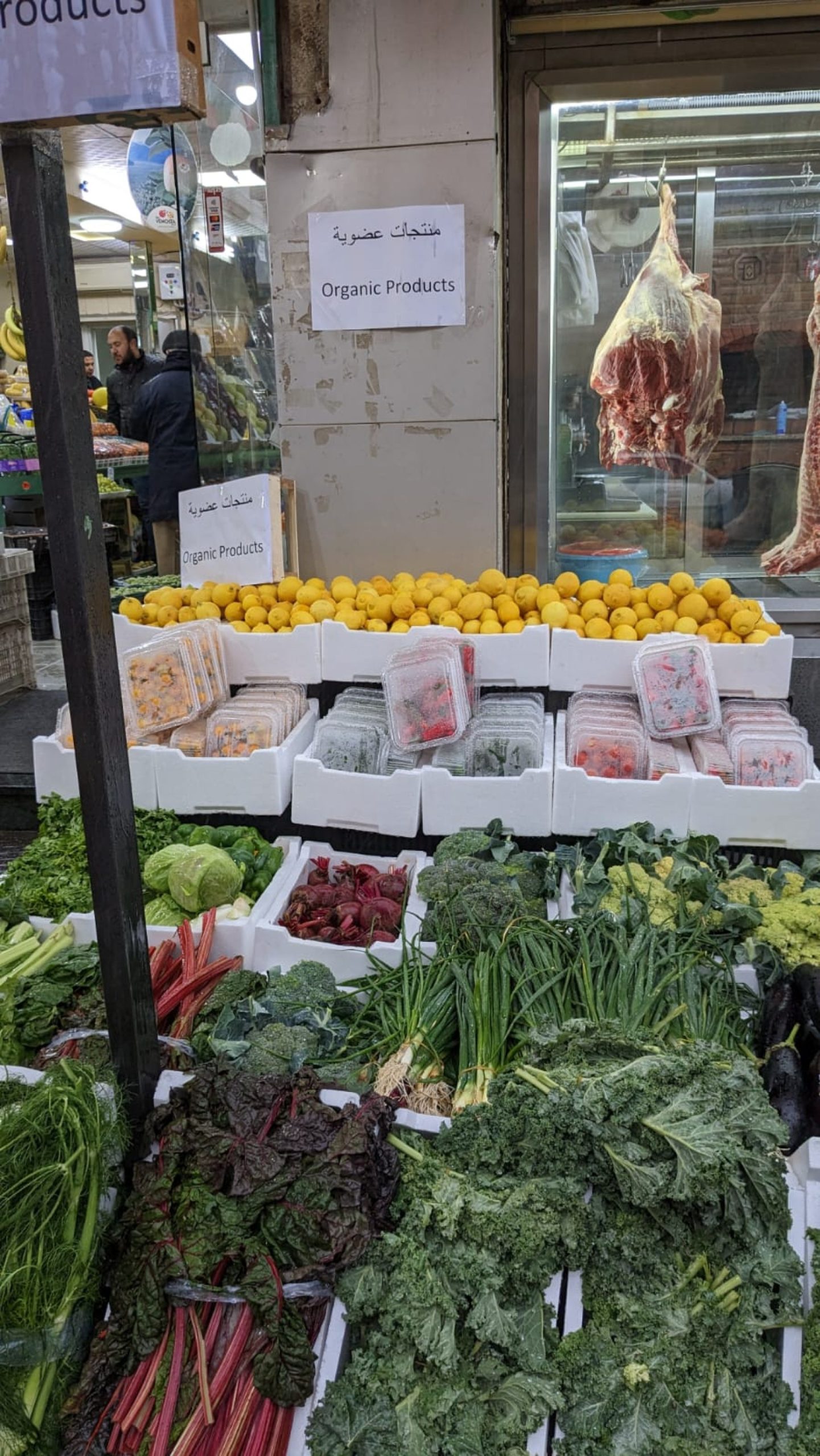
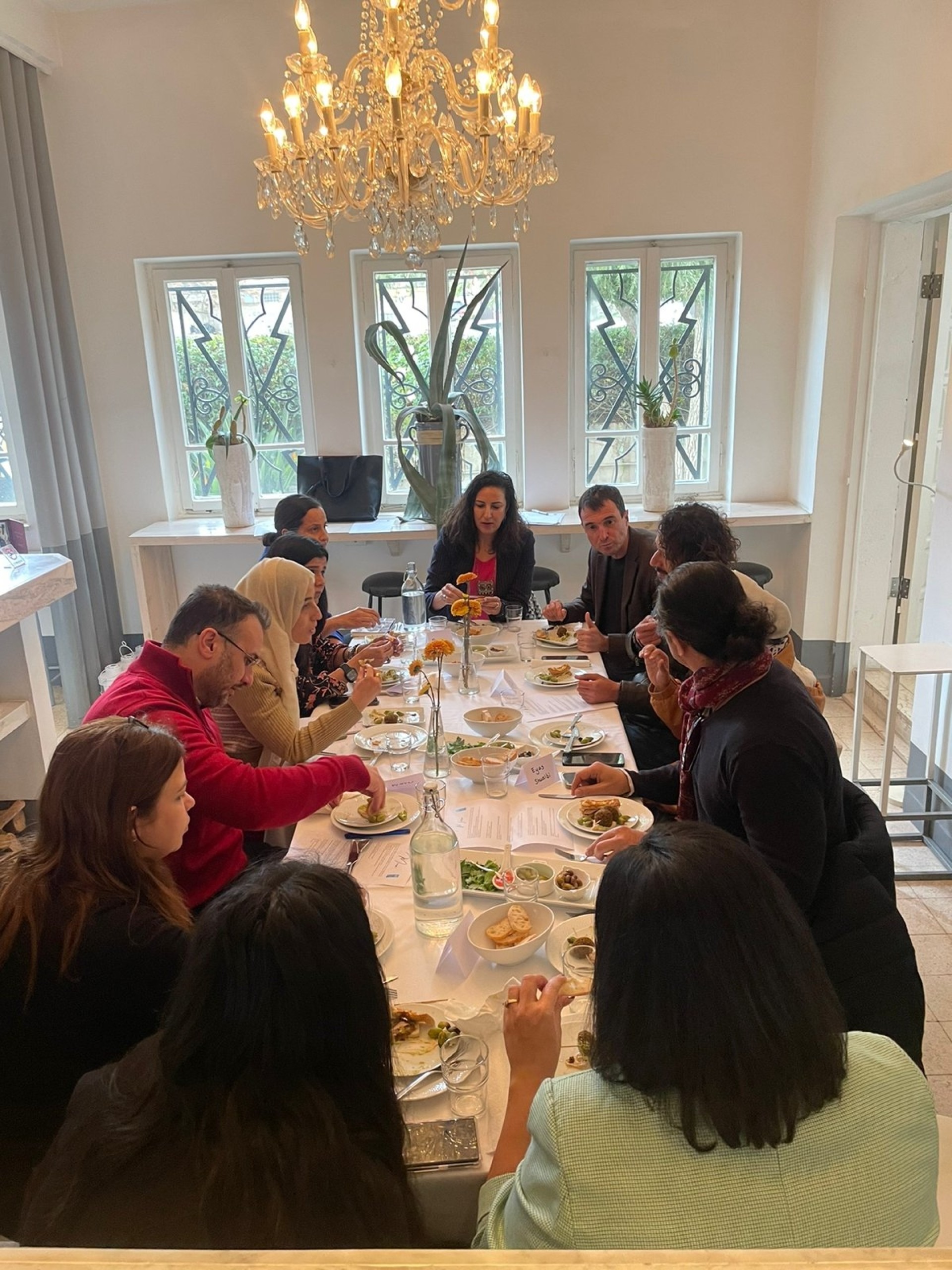
Last course
For the last bite, a lemon sorbet made with organic lemons grown in the region was served, with the question of whether one of the possible paths to self-sufficiency could be regenerative agriculture and whether UNDP should focus on regenerative practices.
Soil is a resource of strategic importance within food systems. It is the main productive means within the traditional agricultural practices. As stated in the texts of the Sustainable Development Goals, land and soils constitute the basis for sustainable development of agriculture, the essential functions of ecosystems, and food security, being the key to sustain life on earth. The current rate of land degradation threatens the ability of future generations to meet their needs unless we can reverse this trend through a concerted effort at sustainable management.
By putting soils in danger, sustainable agriculture, food security and the supply of ecosystem services are compromised (Land and soils. s/f).
In this line, it is vital to select respectful and sustainable farming systems to preserve, and even if possible, recover soil fertility through regenerative practices.
During the lunch, production systems that try to address the problem of soils and especially water to design sustainable models were discussed. Hydroponics or regenerative agriculture or permaculture, were several of the options that were observed among the participants themselves in the deep listening process.
On the other hand, regenerative agriculture tries to develop regenerative practices in order to have a sustainable productive circle where the lands maintain high levels of fertility (it must be remembered that Jordanian soil is generally very fertile despite the lack of water), where a better water storage capacity can be achieved, biodiversity is increased and nutrient content is increased. A vital issue in the strategy that the country can develop in the coming years.
To end the experience, after all the flavors and questions, the table was invited with a reflection for those present: what else could work?